What is a Mineral Deposit by Definition
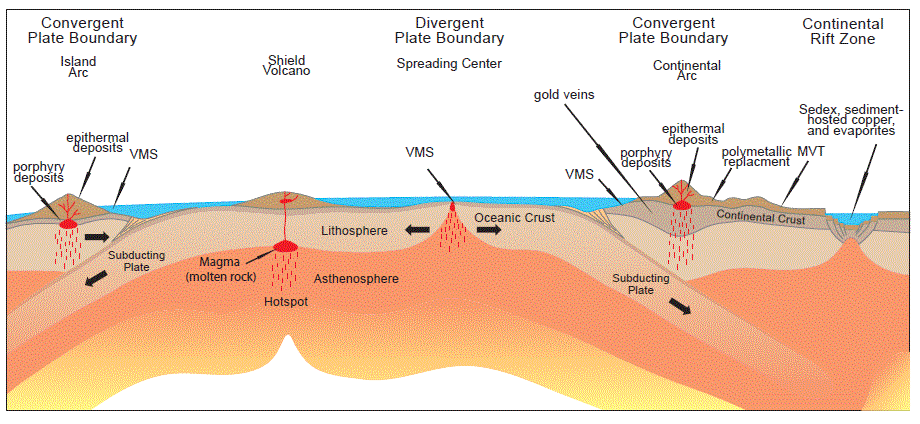
An ore is defined as a mineral or rock from which some valuable constituent, usually a metal, can be profitably extracted. Thus hematite and magnetite are ores of iron; galena is an ore of lead; zinc blende is an ore of zinc. With the ore-mineral is more or less material of no value, called gangue; […]
List of Metamorphic Rocks
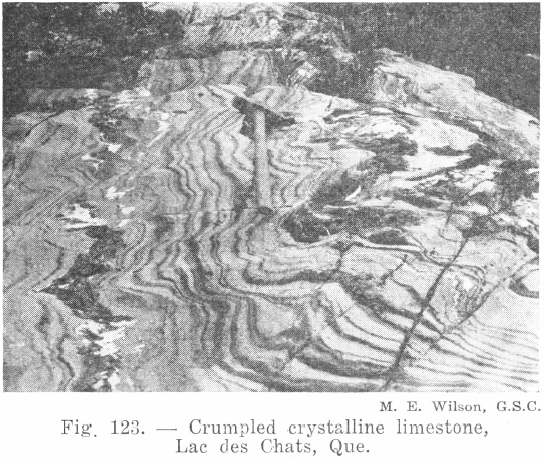
Rocks that have been formed from other rocks, sedimentary and igneous, by internal changes caused by pressure, heat, and the chemical action of the solutions and hot gases, are called metamorphic rocks and here is a list: Crystalline Limestone Crystalline Limestone is a rock that results from the crystallization of the calcite in sedimentary limestone. […]
Types of Porphyritic Rocks
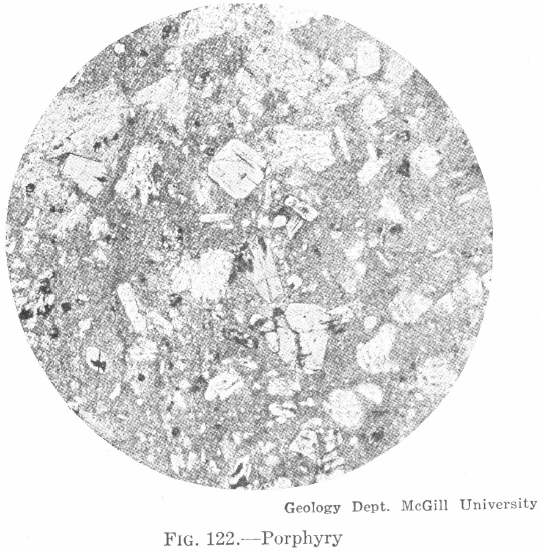
Porphyry. — This name refers to the structure, which is formed of larger crystals set in a fine-grained or glassy ground-mass. The porphyritic structure may be plainly visible, the larger crystals being easily seen (phenocrysts), or it may require the microscope to bring it out. Porphyritic structure may appear in any igneous rock, but the […]
List Volcanic Rocks
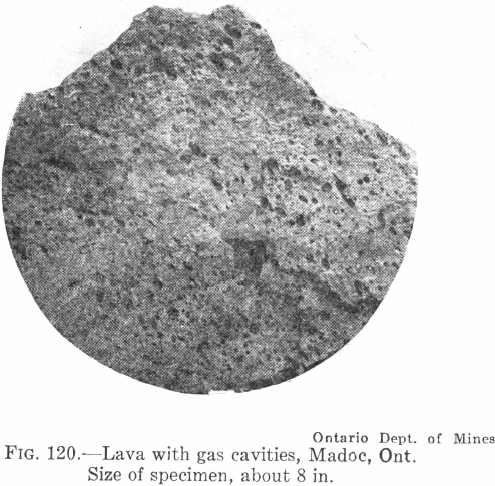
We can list volcanic rocks that are formed at or near the surface by comparatively quick cooling of lava, cannot be classified without the aid of the microscope and chemical analysis, except roughly as light-colored and dark lavas, conveniently called rhyolite, and basalt or trap. Rhyolite Rhyolite is made of light-colored acid lava flows, often called […]
Examples of Plutonic Rocks
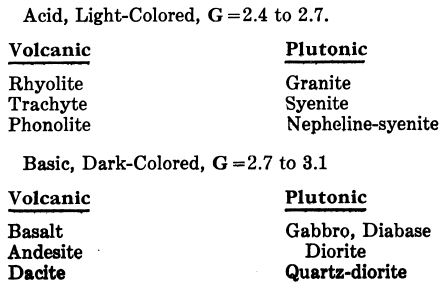
It is strongly recommended that these descriptions and examples of plutonic rocks be read with the specimens in hand, obtainable, as noted before, from the Geological Survey. Granite Granite is a coarse or medium- grained rock, composed of quartz, an acid feldspar or two of them (orthoclase, microcline, albite), and generally mica (biotite, or muscovite, or […]
Volcanic Rock Formations
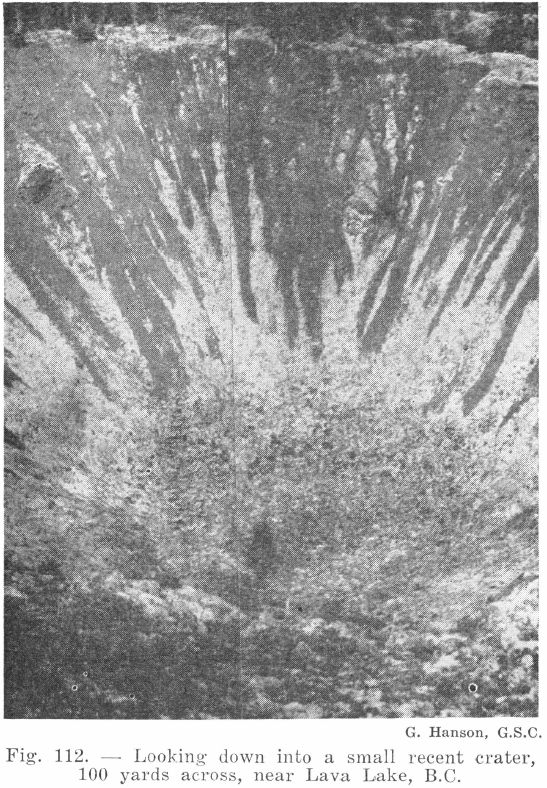
Volcanoes A volcano is the most striking evidence of a hot interior. There are about 250 active volcanoes at present, and about as many more that have been active in historic times. The cone shape of a volcano is due to its gradual building up by the ejection of material from the center hole, the […]
Stoichiometry of Excess Reagent Quantities

In this Example of Stoichiometry of Excess Reagent Quantities determination we show how do you determine how much of the excess reagent is left over & how to calculate how much more of the limiting reagent is needed to use up the excess reactant? Introduction: So far we have assumed that a given reactant is completely used up […]
How to do a Manual Titration
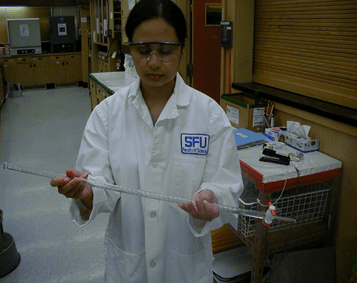
Those who do not know How to do a Manual Titration get their chance here with the step-by-step procedure. Rinse the inside of the Burette Rinse the burette with 2-3 mLs of standarized NaOH solution. Make sure all inside walls including the tip are rinsed. Fill the Burette Discard the rinse solution into the sink or a […]
How are Different Rock Types Formed
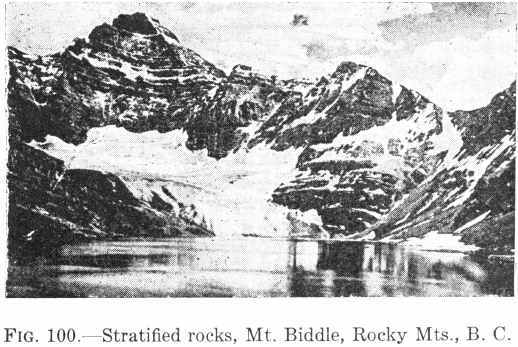
There are three great rock-making processes, namely: sedimentation movements of the melted rock or rock magma from within outwards metamorphism, or transformation of rocks by heat, pressure, and the influence of hot liquids and gases. These will now be discussed in order; and after the description of each process, there follows an account of the […]
Classes of Rocks
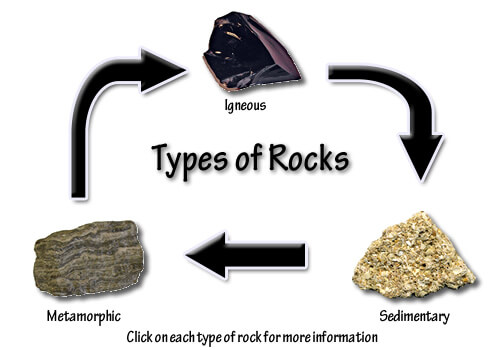
Three Classes of Rocks.—The rocks are divided into three great classes: Sedimentary rocks, made of fragments of older rocks more or less water worn or ground to powder, and then spread out and deposited in layers of gravel, sand, mud, etc., to be later consolidated by pressure and natural cementing. The material may also consist […]
